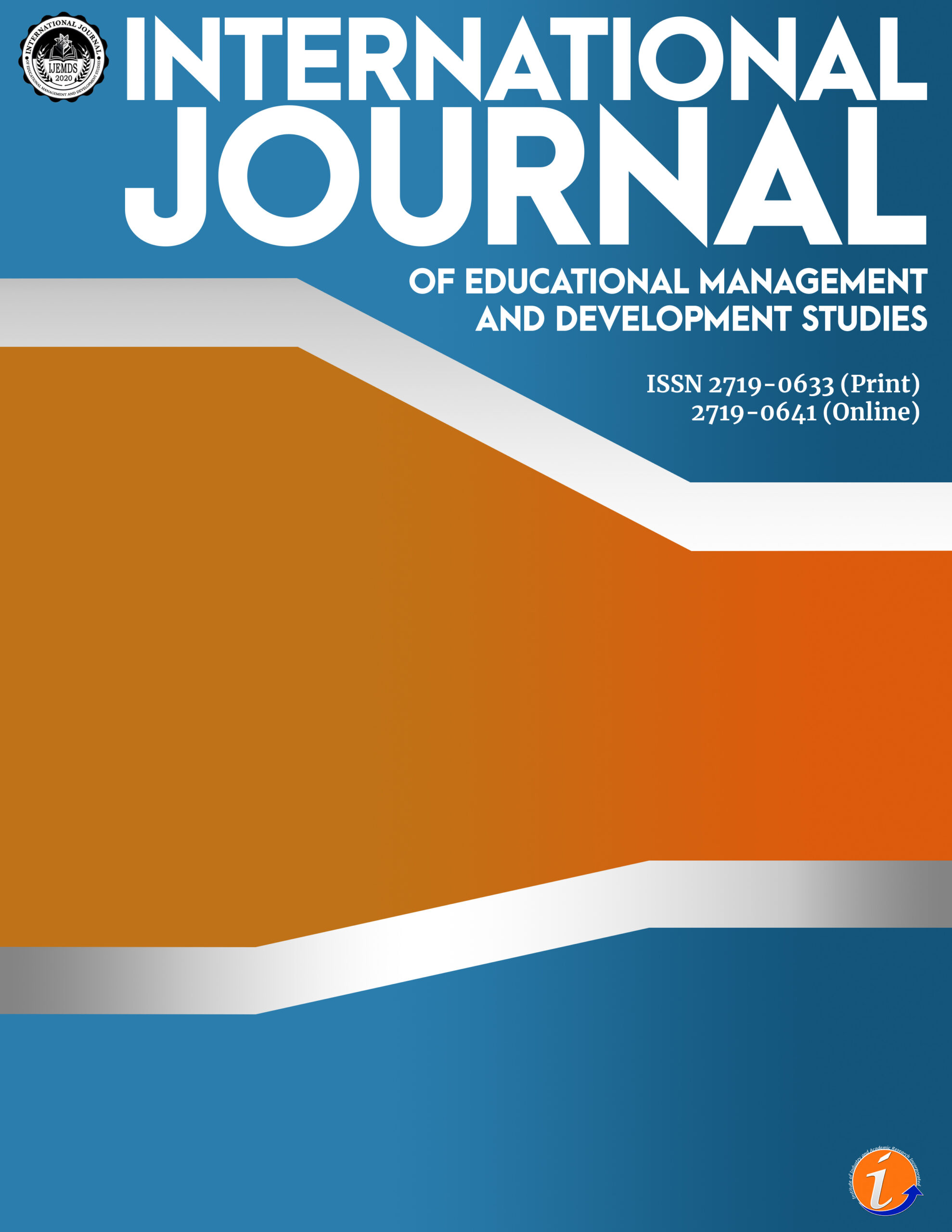This study aimed to examine the common technology being used by the participants, their perceived efficacy level in using technology, and the challenges they face in using those. The research utilized a descriptive method through purposive sampling technique to select the 30 teachers from different private schools in San Pablo City during the Academic Year 2020-2021. A researcher-made questionnaire was used in gathering data. The respondents identified smartphone as hardware device they commonly used while the software apps commonly used were zoom as videoconferencing software app, web browsers as reference software app, and social networking sites as forum software apps. On the other hand, the respondents perceived that they have high level of efficacy with the use of hardware devices. They also have high level of efficacy in using each type of software apps (videoconferencing software, reference software, and forum software). In addition, the result showed four major challenges they faced in using technology; keeping up with changes, fixing troubleshoots, slow internet connection, and lack of familiarity. The results lead to the development of a guidebook, titled “Hi Teach” which may be put into evaluation and validation process to determine its possible strength to be utilized in different classroom purposes.
technology, hardware devices, software apps, efficacy level. TPACK, guidebook
Judith Reyes. Corresponding author. Licensed professional teacher with 4 years teaching experience. Master’s Degree in Education, Major in English. Currently working at San Pablo City Integrated High School as Junior and Senior High School English Teacher. Email: judithreyes262815@gmail.com
Jasper Del Valle. Research advisor. San Pablo Colleges.
This paper is presented in the 3rd International Conference on Multidisciplinary Industry and Academic Research.
Albrini, Y. (2018). The effect of authentic m-learning activities on student engagement and motivation. British Journal of Educational Technology, 32, 121.
Aragones, A. (2021). Online Communication and Adolescent Relationships. The Future of Children, 18(1), 119-46. http://dx.doi.org/10.1353/foc.0.0006
Buenafe, J. (2015). NYU Researchers Develop Mobile Apps That Take Students into the Laboratory. Retrieved from http://www.universityherald.com/articles/15316/20150128/nyu-researchers-developmobile-apps-that-take-students-into-the-laboratory.htm
Cannaman, K. (2015). Effectiveness of computer-based instruction: An updated analysis. Computers and Human Behavior, 7(1/2), 75-94.
Carlson, M. (2018). What is Alice? Retrieved from http://www.alice.org/index.php?page=what_is_alice/what_is_alice.
Clemeno, J. (2015). Educational Technology Research That Makes a Difference: Series Introduction. 31 (8), 18-20.
Coman, W. (2020). How to Make Your Video Calls Look and Sound Better. Retrieved from https://www.wired.com/story/how-to-make-video-calls-look-and-sound-better/
Dela Rosa, J. (2016). The Psychology of the Language Learner: Individual Differences in Second Language Acquisition, New Jersey: Lawrence Erlbaum
Diaz, Z. (2016). The Use of Multimedia in English Teaching. Leshan. LNU. Retreived from https://busyteacher.org/20651-how-to-use-social-media-esl-classroom.html
Digno, R. (2014). Reconsidering research on learning from the media. Review of Educational Research, 53(4), 445-459.
Erickson (2018). Homo Zappiens and the Need for New Education Systems. Homo Zappiens and the Need for New Education Systems Wim Veen
Flores, J. (2013). Effects of a long-duration, professional development academy on technology skills, computer self-efficacy, and technology integration beliefs and practices. International Society for Technology in Education, 39(1), 22-43.
Fule, M. (2014) S. (2000). Grammar and Composition Handbook. Quezon City
Grabe, A. (2017). A proactive approach to a research agenda: A call to action. Journal of Computing in Teacher Education, 21(3), 74, 76.
Hayes, N. (2019). What works: A commentary on the nature of scientific research. Contemporary Issues in Technology and Teacher Education, 3(1).
Hayton, T. (2016). Using Social Media inside the classroom. Washington D.C. Neely Worldwide Publishing.
Hsu, Y. (2015). Mobile microblogging: Using Twitter and mobile devices in an online course to promote learning in authentic contexts. The International Review of Research in Open and Distance Learning, 13(4), 211-227.
Keenan, E (2012). Improving educational research: Toward a more useful, more influential, and better-funded enterprise. Educational Researcher, 32(9), 3-14.
Koehler, E. P. (2015). Towards “second generation” interactive, graphical programming environments. Proceedings of 2nd IEEE Computer Society Workshop on Visual Languages, Dallas, Texas, USA. Retrieved from http://www.irrodl.org/index.php/irrodl/article/view/1542/2635
Leshea, M. (2013). Deriving a typology of web 2.0 learning technologies. British Journal of Educational Technology, 47(4), 763–777.
Loveless, B. (2021). Are Learning Apps Helping or Hurting Education? Retrieved from https://www.educationcorner.com/learning-apps-helping-hurting-education.html
Mateo, K. (2016). What kind of equipment/camera is best to be used when doing video-observations in a classroom? Retrieved from https://www.researchgate.net/post/What_kind_of_equipment_camera_is_best_to_be_used_when_doing_video-observations_in_a_classroom
Mishra, J. (2015). Podcast creation as transformative music engagement. Music Education Research, 17(1), 17–33. https://doi.org/10.1080/14613808.2014.969219.
Moore, J. Spuches C. and Webster,S. (2015). Using Electronic Mail for Teaching and Learning. Retrieved from Paule, M. (2015). Laptops for learning: final report and recommendations of the laptops for learning task force. Retrieved on 18 October 2007 from http://etc.usf.edu/L4L/ https://digitalcommons.unl.edu/cgi/viewcontent.cgi?article=1332&context=podimproveacad
Paule, R. C. (2019). Reconsidering research on learning from media. Review of Educational Research, 53, 445-59.
Polio, R. (2017). Self-regulation of motivation when learning online: The importance of who, why, and how. Educational Technology Research & Development, 59(2), 199-212.
Ramos, C. (2019). 7 Ways to Use Social Media in ESL Classroom. Brussels. Prisme Editions.
Reeves, T. C. (2017). Pseudoscience in computer-based instruction: The case of learner control research. Journal of Computer-Based Instruction, 20(2), 39-46.
Robinson (2018). “Tick Size, Share Prices, and Stock Splits,” Journal of Finance, Vol. 52, pp.655-681.
Rowe, T. (2015). The flickering mind: The false promise of technology in the classroom and how learning can be saved. New York: Random House.
Salleh, J. (2014). Student use of the Tablet PC: Impact on student learning behaviors. Advances in Engineering Education, 3(1), 1-17.
Santos, L. (2014). Student engagement: Rhetoric and reality. Higher Education Research and Development.
Sayadian, O. (2015). Hypermedia as an educational technology: A review of the quantitative research literature on learner comprehension, control, and style. Review of Educational Research, 68(3), 322-349.
Shanen, K. (2019).Social learning graphs: combining social network graphs and analytics to represent learning experiences. Int. J. Social Media and Interactive Learning Environments, 1(1), 43-58. http://dx.doi.org/10.1504/IJSMILE.2013.051652
Signer, J. (2019). Bonus Share Issues and Announcement Effect: Australian Evidence. Retrieved from https://www.researchgate.net/publication/275654158_HAND_BOOK_FOR_WRITING_RESEARCH_PAPER
Sofi, F. (2012). Utilising a collaborative macro-script to enhance student engagement: A mixed method study in a 3D virtual environment. Computers & Education.
Sure, K. (2017). The History of Social Networking. Digital Trends.
Villeno, E. (2019). Educate America Act, H.R. 1804. (1994). Retrieved on 22 February 2016 from http://www2ed.gov.legislation/GOALS2000/TheAct/index.html
Warner, L. (2020). Teacher Self Efficacy. Retrieved from https://www.researchgate.net/publication/341820839_Teacher_Self-Efficacy
Cite this article:
Reyes, J. & Del Valle, J. (2023). Teachers’ efficacy with the use of technology in teaching English. International Journal of Educational Management and Development Studies, 4(1), 24-48. https://doi.org/10.53378/352961
License:
![]()
This work is licensed under a Creative Commons Attribution (CC BY 4.0) International License.










